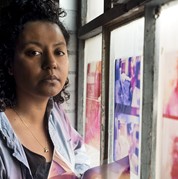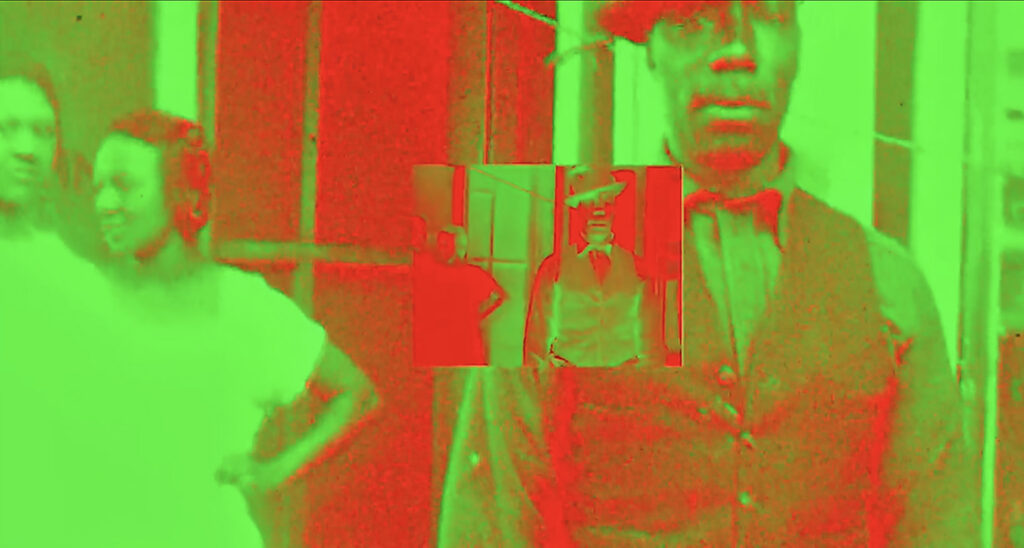Crystal Z Campbell’s multidisciplinary art practice centers on “public secrets”—stories known by many but rarely told. Lines of Sight illuminates the 1921 Tulsa Race Massacre, when white mobs attacked and killed hundreds of Black residents, destroying over 35 city blocks of the predominantly Black Greenwood district (a.k.a. Black Wall Street) in Tulsa, Oklahoma. However, rather than images of the massacre, this immersive exhibition offers an alternative narrative revealing Black communities that thrived despite the massacre.
In the film FLIGHT, archival footage by the Black amateur filmmaker Solomon Sir Jones, who documented thriving Black communities in Oklahoma from the mid 1920s on, is punctuated by the Gap Band’s hit song You Dropped a Bomb on Me. Campbell provides multiple points of entry, intentionally making the images difficult to perceive by using an “impossible” color combination of red and green hues.
Three collages from the Notes from Black Wall Street series feature archival photographs depicting the rebuilding of Greenwood. The artist applied think paint to scar the images, their response to the deliberate erasure and silencing of these stories. With each artistic decision and gesture, Campbell employs various modes of making historical records legible or illegible, complicating how we as viewers perceive history.
About the Artist

Crystal Z Campbell is a multidisciplinary artist, experimental filmmaker, and writer of Black, Filipinx, and Chinese descent. Campbell finds complexity in public secrets—fragments of information known by many but undertold or unspoken. Campbell’s works use underloved archival material to consider historical gaps in the narrative of the 1921 Tulsa Race Massacre, revisit questions of immortality and medical ethics with Henrietta Lacks’ “immortal” cell line, and salvage a 35mm film from a demolished Black activist theater in Brooklyn as a relic of gentrification.
Select honors include a 2022 Creative Capital award, Guggenheim Fellowship in Fine Arts, Harvard Radcliffe Fellowship, Pollock-Krasner Award, MAP Fund, MacDowell, Skowhegan, Rijksakademie, Whitney ISP, and Franklin Furnace Award. Exhibitions and screenings include SFMOMA, Drawing Center, ICA-Philadelphia, REDCAT, Artissima, Studio Museum of Harlem, Project Row Houses, SculptureCenter, Cinemigrante, EMPAC, and DocLisboa. Campbell was a featured filmmaker at the 67th Flaherty Film Seminar, and their film, REVOLVER, received the Silver Hugo at the Chicago International Film Festival. Campbell is currently a Visiting Associate Professor in Art and Media Study at the University at Buffalo and lives in New York and Oklahoma.

